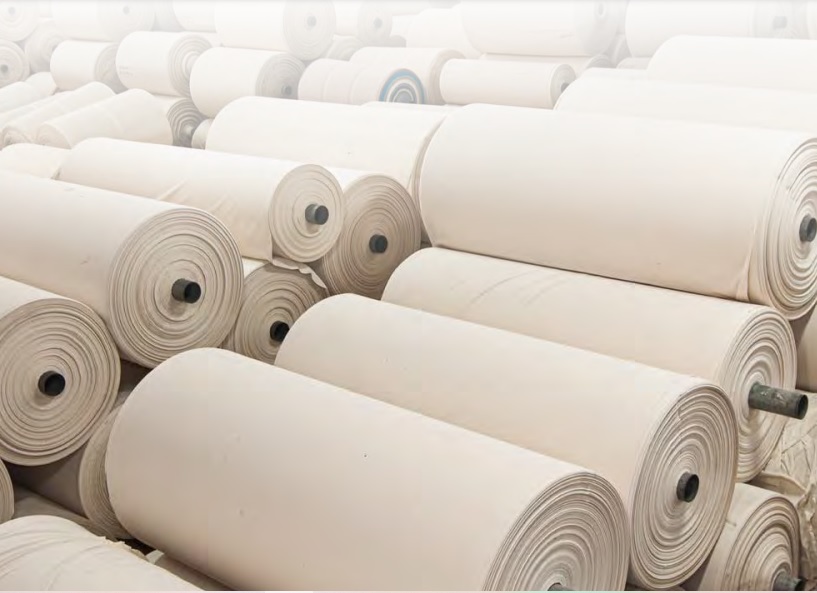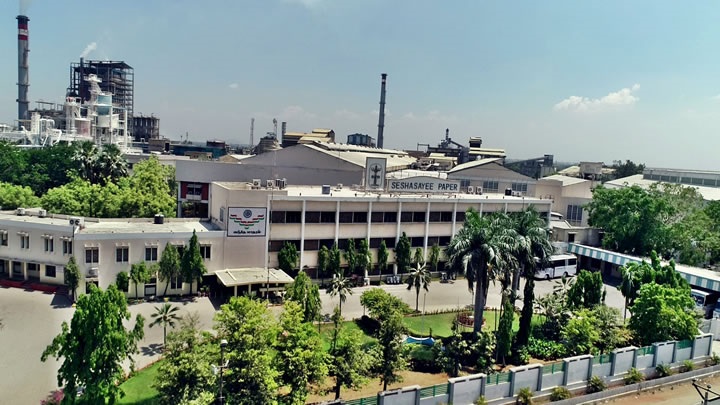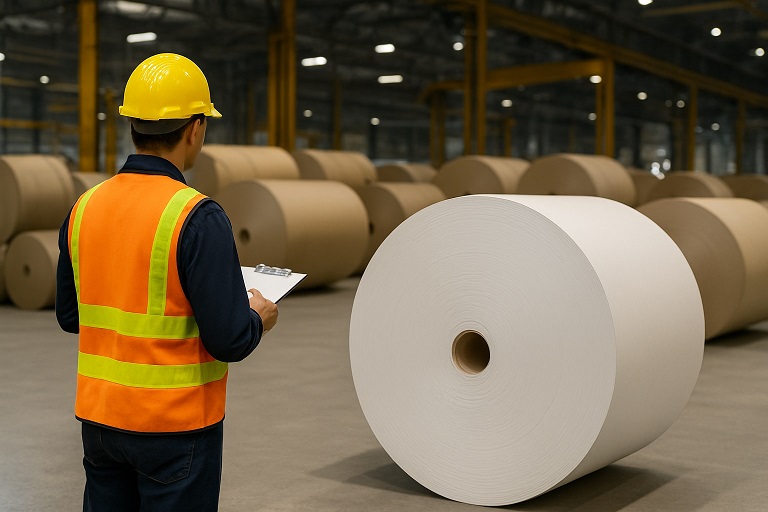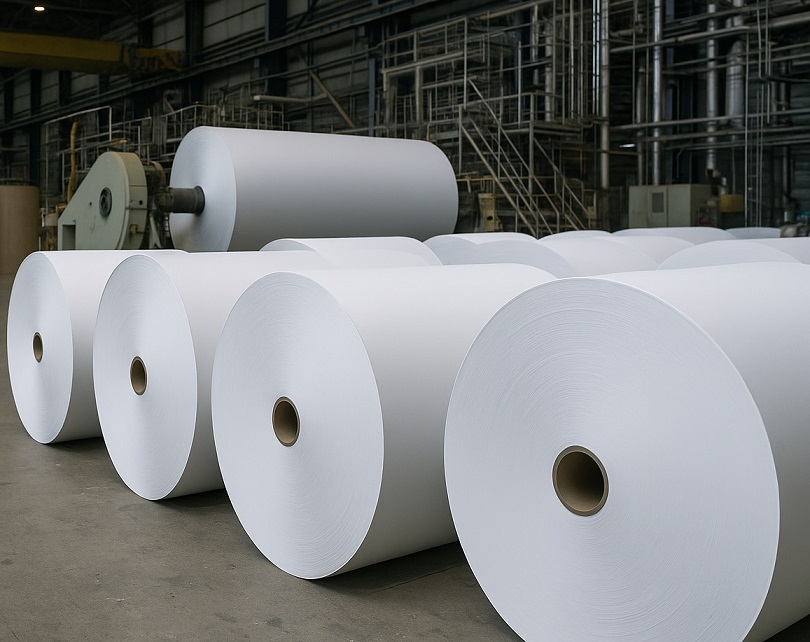Paper industry should target maximum efficiency and competitive pricing for higher growth returns, says Mr. Raghabendra N. Dutta Baruah, President of AIFMP
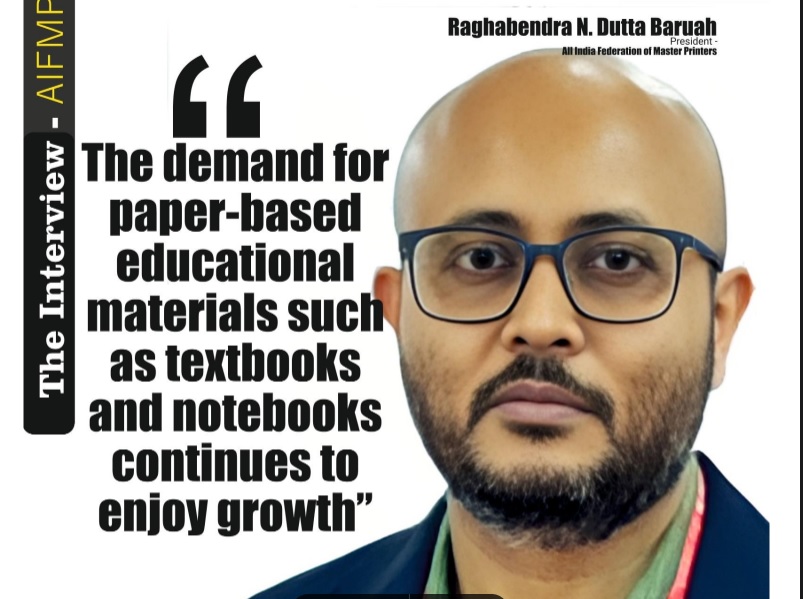
Paper industry should target maximum efficiency and competitive pricing for higher growth returns, says Mr. Raghabendra N. Dutta Baruah, President of AIFMP
Key Points:
-The growth in printing needs fuelled by the NEP should be arithmetic over a long term, with some increase in the short-term owing to a necessity of replacing old material with new syllabus
-A new wave of entrepreneurs are working towards delivering mono-material and ecologically less harmful alternatives
In an exclusive interview with The Pulp and Paper Times, Mr. Raghabendra N. Dutta Baruah, President of the All India Federation of Master Printers (AIFMP), shared his insights on various pressing issues within the printing industry. As the world's largest printers' association, AIFMP has played a pivotal role in uniting printers across India, advocating for their interests, and enhancing industry standards since its establishment in 1953. Mr. Baruah discusses the Federation's initiatives, challenges, and the future of printing in this candid conversation. Here are his views:
The Pulp and Paper Times:
Q: Please give us a small introduction to the All India Federation of Master Printers (AIFMP).
The All India Federation of Master Printers (AIFMP), established in 1953, is composed of 78 affiliate associations from the length and breadth of India and is the world's largest printers' association. AIFMP aims to unite printers nationwide, advocate for their interests, improve industry standards, and promote the value of quality printing to the public and businesses. The Federation organizes various events, including 'Printers' Day' to honor Johannes Gutenberg, 'Romancing Print' seminars, and the National Awards for Excellence in Printing (NAEP) and Global Print Excellence Awards (GPEA). AIFMP also organised the prestigious PAMEX - the printing and allied machinery exhibition. AIFMP publishes 'PRINTING TIMES,' bi-monthly official journal. Internationally, AIFMP is a member of the World Print & Communication Forum (WPCF) and the Forum of Asia Pacific Graphic Arts (FAPGA), fostering cooperation and knowledge-sharing among printers globally.
Q: How does AIFMP analyze the Indian Printing Business, its growth, and emerging opportunities for paper manufacturers and trading communities?
India's fast-growing population has significantly contributed to the growth of all industries including the paper and printing industry. With a larger population comes an increased need for paper-based products, including packaging materials, writing & printing paper, and stationery. As per the India Brand Equity Foundation (IBEF), India's food and beverage industry currently is registering a growth rate of 18 percent. A primary driver behind the growth of India's printing industry is the country's increasing purchasing power and literacy rates and the emphasis on education. Education is becoming more accessible to the people and the demand for paper-based educational materials such as textbooks and notebooks continues to enjoy growth. In fact, in Scandinavian and other western countries, there is a move away from electronic learning tools like tablets, PCs to traditional printed material, as it has been found that electronic tools reduce the retention and understanding in students. The rise of environmental concerns has fuelled a move towards paper-based packaging from plastic, and a new wave of entrepreneurs are working towards delivering mono-material and ecologically less harmful alternatives. This has provided a strong impetus for the growth of the paper industry, creating a consistent market for manufacturer. So, yes, there is huge scope for growth and for seizing emerging opportunities for the paper & printing, packaging industries.
Q: Paper is an essential raw material for a printer. The cost of paper (speciality, fine, and printing grade) is directly attached to the printer’s margin. How do you evaluate the current pricing system of paper?
In the view of printers, the pricing of paper is quite opaque and profit-driven. Printers often face difficulty in executing work as paper prices change without consultation or adequate notice, jeopardising printers who have long-term supply contracts with print buyers. This leads to an unhealthy spiral where printers’ margins are impacted, in some cases bringing loss. In the long term, paper manufacturers and suppliers have to work with local printers in a symbiotic relationship so that the print ecosystem is preserved and nurtured to grow. Without this, the local industry, particularly the SME segment, may shrink, leading to market loss for paper industry.
Q: There is a huge demand for WPP and Packaging paper, which is driven by the education sector, (E-commerce) Packaging, and Printing segments, creating opportunities. On the other hand, even today, per-capita consumption of paper in India is low. Is the paper sector, expecting to yield high returns in the next five to 10 years, carefully calibrating the prices?
As I have mentioned above, India is a growing economy with a huge population, insulated from global shocks by the very size of the domestic market. A young population with a huge block below 28 years of age with widespread education, means the demand for paper-based reading, writing material is on the growth path and also the rising aspiration level means the demand for packaged products will continue to grow. In per capita terms, paper and allied materials consumption still has a lot of scope to increase, though it is big in absolute terms. Paper industry should aim at maximum efficiency and deliver competitively priced products since the returns from growth in the consumption will far outstrip growth achieved by any predatory pricing.
Q: There has been a lot of use of Fine paper in printing applications; unfortunately, no Indian paper mills or less are making fine paper. Please let us know how big the fine paper market is from a printer’s perspective.
The aspirational trends in India are on the rise with better education, continued growth of pharma sector, a growing middle class, a burgeoning service sector with salaried employees and who have money to spend. People will continue to demand better quality and better presentation and as such, the demand for fine paper will grow by leaps and bounds. Indian paper industry needs to focus on good quality virgin paper from renewable sources like bamboo that will provide relatively lower priced products that can therefore reach a larger slice of the aspirational population.
Q: What new trends do you see in the printing business arising?
The printing industry is seeing a growth in bespoke printing, personalisation, in short runs with short turnaround and delivery. This is also obliquely contributing to a demand for better quality, which extends to substrates, partly from the necessity of better media which can run on sophisticated digital and highly automated production systems and partly because customers are open to spending a bit more to get a better finish without it pinching their pockets because of the short runs.
Q: The Government has implemented the New Education Policy (NEP), replacing the old syllabus, expected to be in line this year. How big is this opportunity for printers and publishers? Do you think this mammoth printing job will infuse more printing businesses?
The growth in printing needs fuelled by the NEP should be arithmetic over a long term, with some increase in the short-term owing to a necessity of replacing old material with new syllabus. However, this can translate into a demand for short-run, just-in-time printing since publishers should prefer eliminating the danger of obsolescence and storage damage at a slightly higher cost per copy, which will be more than offset by the elimination of investment in inventory and warehousing space. Printers are moving towards this production model and the paper industry should also increase their offerings for suitable substrates.
Q: According to the figures from business intelligence service Smithers last year, the number of people employed by the print industry worldwide has shrunk by 14.8% since 2018, and the number of print businesses declined in the same period from 667,630 in 2018 to 587,934 in 2022, a drop of 11.9%. What does AIFMP think about this decline?
The figures do not reveal the fact that the return to company per employee is rising along with the CTC due to the fewer number of workers needed to run modern equipment. A few better trained & educated personnel are doing the work done by many unskilled persons earlier. There is also consolidation, with businesses in the European and American markets going for M&As, creating huge behemoths like Autajon in the packaging space. It remains a fact that Indian market growth is not going to decline for a long time, so the prospect is very bright for paper & printing industry here.
Q: There has been a lot of discussion about the digital advent; do you think digital will obsolete the printing business in the long term?
Digital will continue to grow and printing will also flourish. There may be temporary adjustments of market shrinkage in one segment, but there are growth prospects in other segments. The printing & packaging industries are seminal and cannot be dispensed with, especially in a country like India. Many traditional publishers are using hybrid modes with digital content fuelling sales in offline, hardcopy content. Interactive material with QR codes that can be scanned and accessed by smartphones are becoming ubiquitous. Even textbooks have QR codes printed for accessing additional info for a more in-depth understanding by students.
Q: Correct us if we are wrong, but can the agro-residue-based paper be used in high-end printing applications? Will the printing quality be the same as wood-based paper?
Til now, agro-residue based paper has not been able to get to the same level as wood-based in India. However, this does not mean that this is not possible. It is for the paper industry to rise to the challenge and deliver.
Q: Are you satisfied with the support of Indian paper mills/traders during tough times like COVID-19?
The rise in prices after COVID-19 led to many printers facing a lot of economic distress and this extended to the paper supplies. Indian printing has a huge number of SMEs which are a major contributor of employment and revenue generation. They also contribute significantly to the consumption of paper products. Paper mills and traders have to keep in mind that these SMEs also need to be nurtured for all-round growth.
Q: Any message for Indian Paper Mills and the Trading Community?
I would request that the Paper manufacturing & trading community consider printers as the other side of the coin, one is incomplete without the other. Forging a mutually beneficial relationship will lead to exponential growth and returns for all our industries. In the spirit of Make In India, paper manufacturers should aim at reducing the dependence on imports, which will give returns in the long term and create a strong market for decades to come.
Web Title: Paper industry should target maximum efficiency and competitive pricing for higher growth returns, says Mr. Raghabendra N. Dutta Baruah, President of AIFMP





 Join WhatsApp Group
Join WhatsApp Group Join Telegram Channel
Join Telegram Channel Join YouTube Channel
Join YouTube Channel Join Job Channel (View | Submit Jobs)
Join Job Channel (View | Submit Jobs) Join Buy Sell Channel (Free to Submit)
Join Buy Sell Channel (Free to Submit) Paper News Headlines Channel (Free to read)
Paper News Headlines Channel (Free to read)




